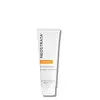What's inside
What's inside
 Key Ingredients
Key Ingredients

 Benefits
Benefits

 Concerns
Concerns

No concerns
 Ingredients Side-by-side
Ingredients Side-by-side

Water
Skin ConditioningAlcohol Denat.
AntimicrobialPropylene Glycol
HumectantGluconolactone
Skin ConditioningGlycolic Acid
BufferingPotassium Hydroxide
BufferingPolyquaternium-10
Lactobionic Acid
BufferingCitric Acid
BufferingKojic Acid
Antioxidant4-Butylresorcinol
AntioxidantGlycyrrhiza Glabra Root Extract
BleachingAscorbic Acid
AntioxidantArginine
MaskingBHT
AntioxidantSodium Sulfite
PreservativeSodium Bisulfite
AntioxidantCI 19140
Cosmetic ColorantCI 17200
Cosmetic ColorantWater
Skin ConditioningGlycyrrhiza Glabra Root Water
AntioxidantGlycerin
HumectantTetrahexyldecyl Ascorbate
Antioxidant3-O-Ethyl Ascorbic Acid
Skin ConditioningPotassium Azeloyl Diglycinate
Skin ConditioningScutellaria Baicalensis Root Extract
AstringentPunica Granatum Seed Cell Culture Lysate
Skin ConditioningPolymethylsilsesquioxane
Niacinamide
SmoothingDiglucosyl Gallic Acid
Alpha-Arbutin
AntioxidantEllagic Acid
Skin ConditioningTranexamic Acid
AstringentHydrogenated Polyisobutene
EmollientAcetyl Glycyl Beta-Alanine
Skin ConditioningTetrapeptide-30
Skin ConditioningOligopeptide-68
BleachingHydroxyphenoxy Propionic Acid
Skin ConditioningGlutathione
Glycyrrhiza Glabra Root Extract
BleachingRubus Idaeus Fruit Extract
AstringentSilybum Marianum Extract
Skin ConditioningBrassica Rapa Root Extract
Skin ConditioningMorus Alba Root Extract
BleachingAcetyl Glucosamine
Skin ConditioningAllantoin
Skin ConditioningTocopheryl Acetate
AntioxidantMaltodextrin
AbsorbentGlyceryl Stearate
EmollientHydrogenated Lecithin
EmulsifyingXanthan Gum
EmulsifyingButylene Glycol
HumectantCaprylyl Glycol
EmollientHydroxyacetophenone
AntioxidantCeramide AP
Skin Conditioning1,2-Hexanediol
Skin ConditioningDisodium EDTA
Squalane
EmollientHydrogenated Poly(C6-14 Olefin)
EmollientSodium Oleate
CleansingFerulic Acid
Antimicrobial4-Butylresorcinol
AntioxidantHydroxyphenyl Propamidobenzoic Acid
Skin ConditioningSodium Benzoate
MaskingWater, Glycyrrhiza Glabra Root Water, Glycerin, Tetrahexyldecyl Ascorbate, 3-O-Ethyl Ascorbic Acid, Potassium Azeloyl Diglycinate, Scutellaria Baicalensis Root Extract, Punica Granatum Seed Cell Culture Lysate, Polymethylsilsesquioxane, Niacinamide, Diglucosyl Gallic Acid, Alpha-Arbutin, Ellagic Acid, Tranexamic Acid, Hydrogenated Polyisobutene, Acetyl Glycyl Beta-Alanine, Tetrapeptide-30, Oligopeptide-68, Hydroxyphenoxy Propionic Acid, Glutathione, Glycyrrhiza Glabra Root Extract, Rubus Idaeus Fruit Extract, Silybum Marianum Extract, Brassica Rapa Root Extract, Morus Alba Root Extract, Acetyl Glucosamine, Allantoin, Tocopheryl Acetate, Maltodextrin, Glyceryl Stearate, Hydrogenated Lecithin, Xanthan Gum, Butylene Glycol, Caprylyl Glycol, Hydroxyacetophenone, Ceramide AP, 1,2-Hexanediol, Disodium EDTA, Squalane, Hydrogenated Poly(C6-14 Olefin), Sodium Oleate, Ferulic Acid, 4-Butylresorcinol, Hydroxyphenyl Propamidobenzoic Acid, Sodium Benzoate
Ingredients Explained
These ingredients are found in both products.
Ingredients higher up in an ingredient list are typically present in a larger amount.
Also known as Rucinol. It's an antioxidant primarily used to treat hyperpigmentation in the outermost layer of skin.
Hyperpigmentation occurs when an enzyme called tyrosinase triggers melanin production in the skin. Melanin is the pigment that gives skin, hair, and eyes their color.
Rucinol works by preventing tyrosinase from creating more melanin. According to a study from 2013, rucinol is more effective than other tyrosinase inhibitors such as hydroquinone, arbutin, and kojic acid.
According to a manufacturer, this ingredient is sensitive to air. Good formulations should account for this to keep your rucinol effective.
Learn more about 4-ButylresorcinolGlycyrrhiza Glabra Root Extract is an extract of the roots of Licorice. It has been found to have several benefits such as skin hydrating, conditioning, and soothing.
One component, glabridin, has extra potent antioxidant and soothing properties. It has also been found to block pigmentation from UVB rays in guinea pigs.
Licorice Root also contains a flavonoid. Flavonoids are a natural substance from in plants. Flavonoids also have antioxidant properties.
Another component, glycyrrhizin, has been found to have anti-inflammatory and antimicrobial benefits. This may make licorice root extract effective at treating acne. However, more research is needed to support this.
Liquiritin is one of the flavone compounds found in licorice. It has been found to help lighten skin by preventing tyrosinase from reacting with tyrosine. When the two react, protein is converted to melanin. Melanin is the substance in your body that gives your features pigmentation.
Learn more about Glycyrrhiza Glabra Root ExtractWater. It's the most common cosmetic ingredient of all. You'll usually see it at the top of ingredient lists, meaning that it makes up the largest part of the product.
So why is it so popular? Water most often acts as a solvent - this means that it helps dissolve other ingredients into the formulation.
You'll also recognize water as that liquid we all need to stay alive. If you see this, drink a glass of water. Stay hydrated!
Learn more about Water